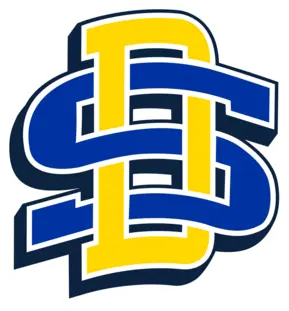Summit League Faces Realignment: A South Dakota Perspective
The longstanding membership of Denver University in the Summit League is set to end, marking a pivotal moment for the league and its constituent schools, particularly those in South Dakota. Denver University announced it will join the West Coast Conference (WCC) in 2026, a move reported by ESPN’s Pete Thamel and the Denver Post.
The decision leaves the Summit League with eight basketball schools, which include South Dakota State University and the University of South Dakota, local institutions deeply tied to the state’s rich athletic and academic tradition. With the departure of Denver University, both schools are now examining the implications and opportunities that arise from such a shift.
The Impact on South Dakota’s Athletic Landscape
South Dakota’s sports programs have built a reputation for excellence and community engagement, making collegiate sports a vital part of the state’s culture. The Summit League has been a crucial platform for showcasing the talents of the South Dakota State Jackrabbits and the South Dakota Coyotes, with each school consistently performing well in both regional and national arenas.
The departure of Denver from the Summit League presents both challenges and opportunities. It necessitates a strategic reevaluation of match-ups and recruitment tactics for existing Summit League teams. Moreover, there’s potential for enhanced regional rivalries which often act as a potent draw for both fanbase and media attention.
The Position of South Dakota Schools
- South Dakota State University (SDSU): As one of the premier institutions in the League, SDSU, known for its formidable basketball and football teams, stands as a beacon of athletic talent in the region. The university is keen on maintaining its competitive edge and reinforcing its status in the Summit League post-Denver’s departure.

South Dakota State University
- University of South Dakota (USD): The Coyotes, backed by a passionate fanbase, are poised to leverage this league shuffle to solidify their position in the midwest athletic scene. Their basketball and football teams have been cornerstone elements of the university’s sports strategy.

University of South Dakota
Denver University’s Next Steps and its Historical Ties
As a private, urban university, Denver fits more seamlessly with the WCC’s institutional profile, consisting entirely of private schools. This realignment suggests a strategic move for Denver, particularly in basketball, where it aims to enhance its competitive profile. The WCC is recognized as a potent force in college basketball, with multiple NCAA tournament bids over recent years.
Denver’s departure means the university will remain in the National Collegiate Hockey Conference, since the WCC does not sponsor hockey, allowing its robust ice hockey program to continue without disruption.
Such a transition also reflects larger trends in collegiate athletics where conference affiliations are frequently revisited to align more closely with institutional goals and profiles.
The Summit League’s Strategic Future
The Summit League, now seeking to sustain the competitiveness of its basketball programs, stands ready to recruit new members who share their strong academic and athletic values. This moment underscores a pivotal re-evaluation and strategizing period for the league, as highlighted in their release: “The League always has been and will remain steadfast in continuing efforts to pursue new members who align with the strong academic and athletic values of our existing institutions.”
Conclusion
As Denver transitions to the WCC, South Dakota’s universities remain at the heart of the Summit League’s future. By capitalizing on the momentum of change, schools like South Dakota State and the University of South Dakota can further their prominent footings in college sports. Their ongoing commitment to cultivating talent and championing the spirit of collegiate competition keeps them steadfastly aligned with the goals of Midwestern athletics.
The journey from here for both the universities and the Summit League will define the region’s sports narrative in the years to come, drawing heavily on the traditions, talents, and tenacity that characterize South Dakota’s athletic spirit.
